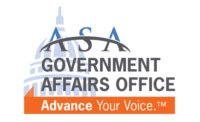
If proper precautions aren’t addressed, working on elevated surfaces can be dangerous.
In fact, elevated falls are one of the leading causes of workplace fatalities. Many occur due to improper use of safety gear, faulty equipment or improper training. Workers that use aerial work platforms such as scissor lifts, or employees that use man-up lift trucks such as swing reaches are especially at risk.
Proper lift truck training is not only essential to prevent accidents and injuries, it’s the law. OSHA 1910.178 Powered Industrial Trucks states lift truck operators must receive classroom training and practical (hands-on) training prior to being certified to operate any lift truck. This includes operator-up trucks such as order pickers and swing reaches. Topics that must be covered by every operator are broken down into truck-related topics such as:
- Truck controls and instrumentation;
- Steering and maneuvering; and
- Vehicle capacity and stability.
Also, workplace-related topics such as:
- Surface conditions;
- Composition of loads;
- Load manipulation; and
- Narrow-aisle and restricted areas.
Employers should refer to OSHA 1910.178 for a complete list of topics to address during training.
Unlike sit-down counterbalanced trucks and reach trucks, operators of order pickers and swing reaches need additional training on how to prevent falls since these trucks can raise the operator to heights of more than 40 ft. These trucks also may be driven in very narrow wire-guided or rail-guided aisles. Steering controls within these aisles become part of the wire-guidance system so the operator is able to focus on the truck’s travel and hydraulic functions. Here is a list of best practices that should be covered during an operator’s training:
- Inspect your lift truck prior to operation;
- Inspect your body belt or harness and lanyard;
- Operators should be properly fitted for correct size and trained to
identify defects;
- Never place any part of your body outside the side gates during
operation;
- Do not handle unstable or loosely stacked loads;
- Check for overhead obstructions before raising platform;
- Never let anyone stand or pass under elevated platform;
- Keep a safe following distance between yourself and other lift
trucks;
- Yield to pedestrians;
- Do not drive operator-up trucks on inclines or use to load/unload
tractor trailers; and
- Order pickers should not be used to place or remove pallets from
rack.
-
Use
caution when entering or leaving wire-guided aisle;
- Stop and sound horn; look both ways before exiting an
aisle;
- Keep aisles clean of debris;
- Ensure pallets are properly placed in rack and do not stick out into
the aisle; and
- Keep a safe distance between lift trucks.
Aerial-work platforms
Despite how long someone has operated aerial lift equipment, until he/she undergoes formal training with a professional, he/she is not qualified to operate such equipment under OSHA and ANSI standards.One more employee properly trained is one less accident waiting to happen. The reduction of accidents and injuries to employees can drastically reduce an employer’s workers’ compensation claims and expenses. Proper training will assist the employees in knowing:
- A pre-start inspection of the AWP;
- Workplace inspection prior to operating the AWP;
- Responsibilities associated with problems or malfunctions affecting
operation of the AWP;
- Factors affecting stability;
- The purpose of placards & decals;
- Safety rules & regulations;
- Authorization to operate the AWP;
- Identification of hazards associated with operation of the
AWP;
- Operating warnings and instructions; and
- Demonstration of proficiency in the operation of the AWP.
Many employers have found out the hard way there is not a problem until there actually is a problem. In addition to avoiding accidents by properly training its employees, in the unfortunate event there is any type of accident an employer’s liability can be impacted by whether or not the employee was properly trained. The cost of training will be minimal when compared to the liability a company will face by not having properly trained employees.
To learn more, go towww.asa.netto review ASA’s recent webinar on this topic.



